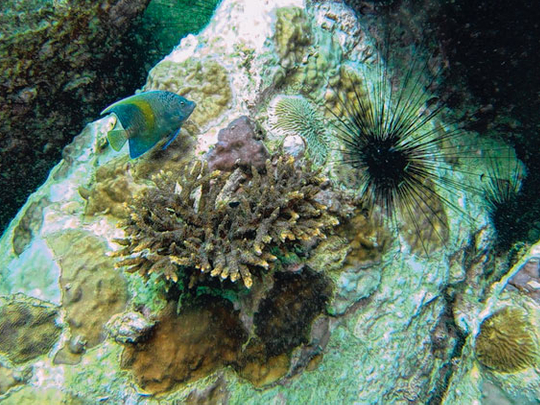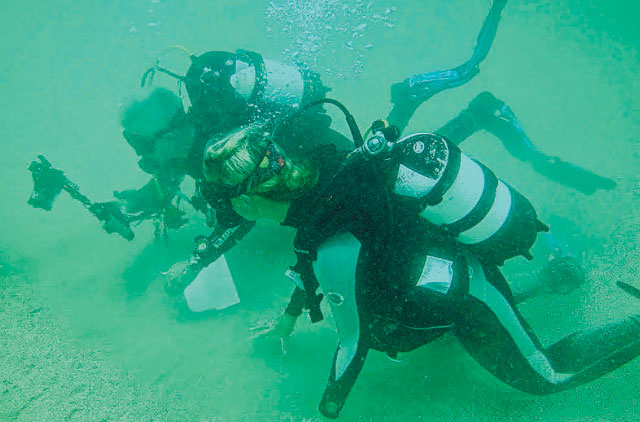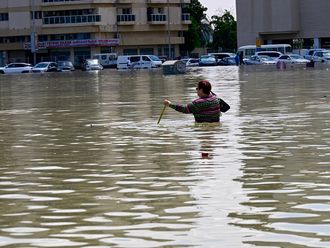
Dubai: A major coral relocation programme to offset underwater marine habitat lost to construction of Palm Jebel Ali is surpassing expectations, Gulf News has learnt.
And thanks to the translocation in late 2008 of more than 11,000 living coral specimens to the northwest Crescent B breakwater of Palm Jebel Ali, marine life is thriving, said Keith Wilson, marine programme director of Emirates Marine Environmental Group (EMEG).
A new underwater survey of the site shows that more 30 types of fish now call the relocated coral system home – a third more than on natural reefs off Dubai -- and the diversity of marine life continues to expand, he said.
"There was a net loss of coral in the Jebel Ali area but it’s not all doom and gloom," Wilson told Gulf News. "The coral is coming back. We looked at it after a year and 95 per cent of the translocated coral survived."
Today, thanks to its location off the northwest crescent — which receives a strong underwater flushing regularly by wind and currents — the transplanted coral system extends for about four kilometres and is about 25 metres in width.
The system lies under seven to 10 metres of water on a gradual underwater slope away from the manmade sea wall.
New coral growth is helping the new sanctuary to take hold alongside other new underwater habitat created along the 80 kilometres of breakwater structures protecting Palm projects and The World in Dubai’s offshore waters.
"We have masses of recruitment. Lots of young corals that we didn’t translocate are now growing there," Wilson said. "There is a very high percentage of cover."
Another added bonus is that fish and marine life are safe from commercial fishing given that waters directly off the palm breakwater are a no-fish zone.
"These are no-take fisheries, they are extremely rich in fish populations. The fish populations are coming back. We found that the breakwater on a single survey contained about 30 species of fish, many of which were high-end commercial fish," Wilson said. "We’re not finding as many in a natural reef."
One of the benefits from new underwater reef projects is that increasing fish are helping to replenish stock in natural adjacent areas where fish such as the hammour migrate.
"They are leaking out to the natural population," he said.
Evacuating the coral
Wilson recounted the mad rush in late 2008 when a newly-struck underwater marine team was given only five weeks to evacuate coral from the Palm Jebel Ali waters targeted for development.
"We had five weeks to do the project," Wilson said. "We had three boats and three dive teams per boats. They achieved a harvest and cementing of up to 120 corals per day."
Dive teams descended to areas proposed for the construction of Waterfront Breakwaters 3 and 4 on Palm Jebel Ali and once they identified only healthy corals, used hammers and chisels to dislodge the coral from the seabed.
Bleached or moribund corals were avoided as were large common table corals known as Acropora, Wilson said. Uncommon or rare corals were preferred to give the new relocation site more biodiversity.
Wilson noted that once gabbro rocks were positioned on the sea bottom of the relocation area from barges, the newly harvested corals were attached to the stone base using eco-friendly, two-part epoxy glue which set within roughly half-an-hour.
The glue worked and permanently attached the coral to their new home.













